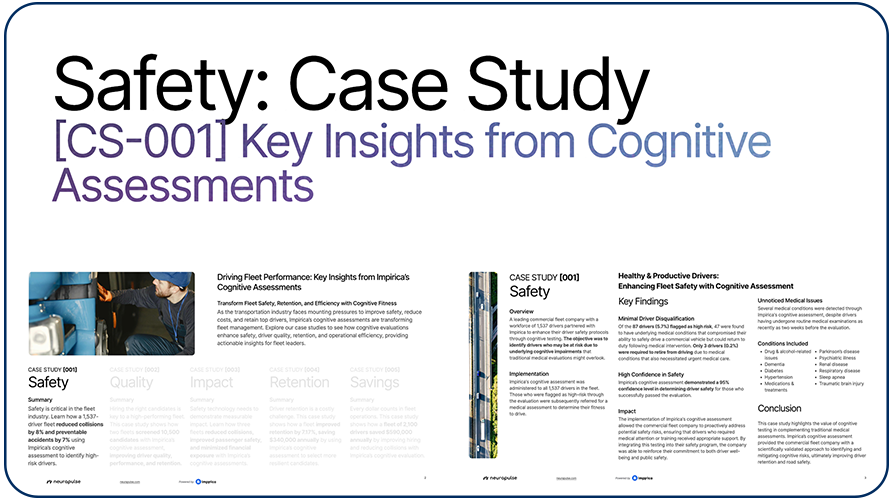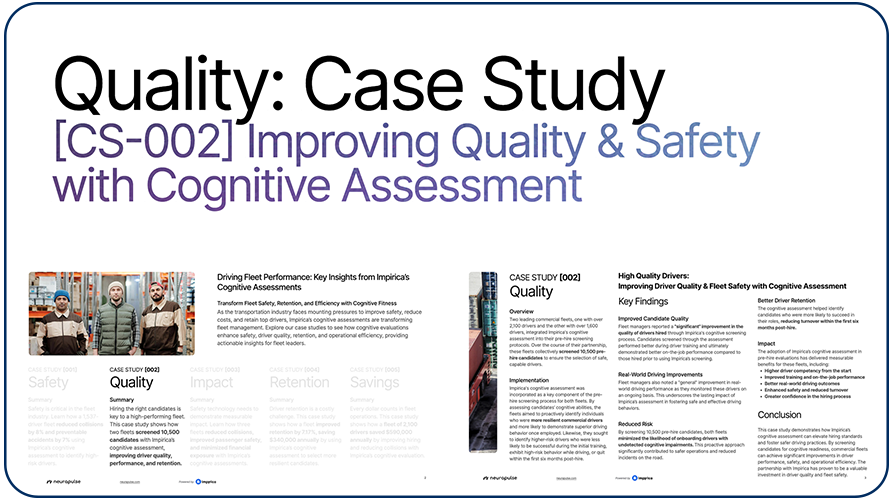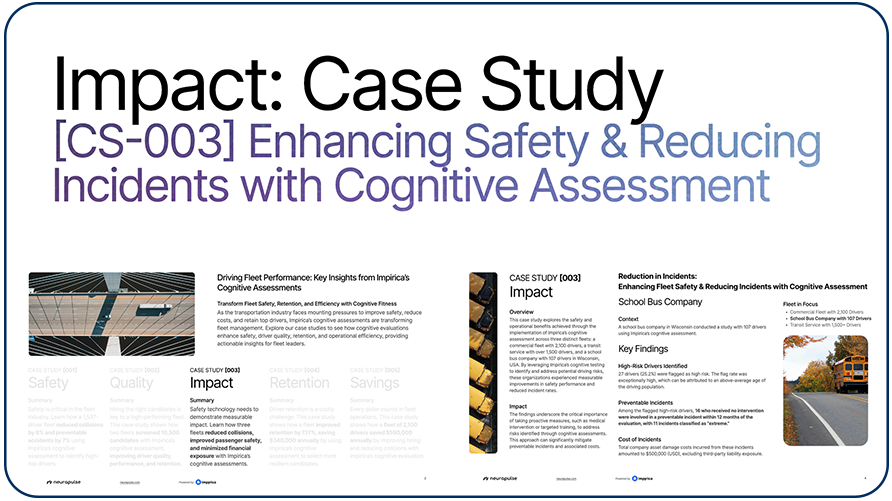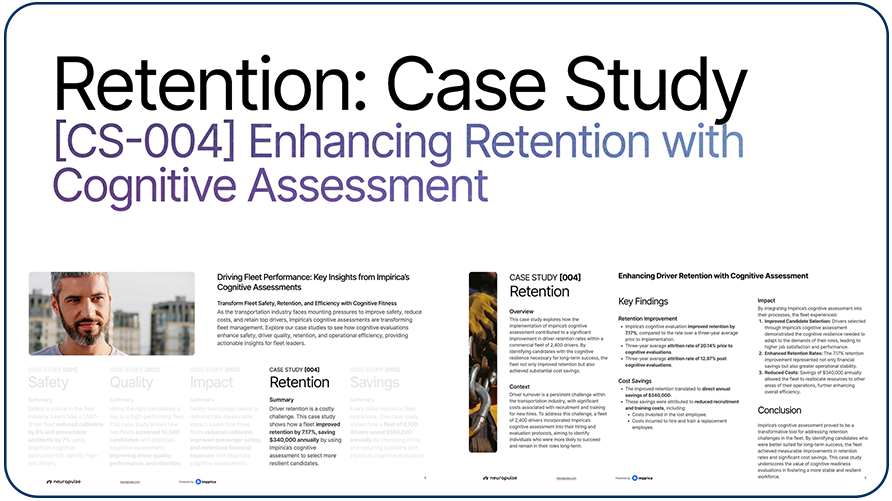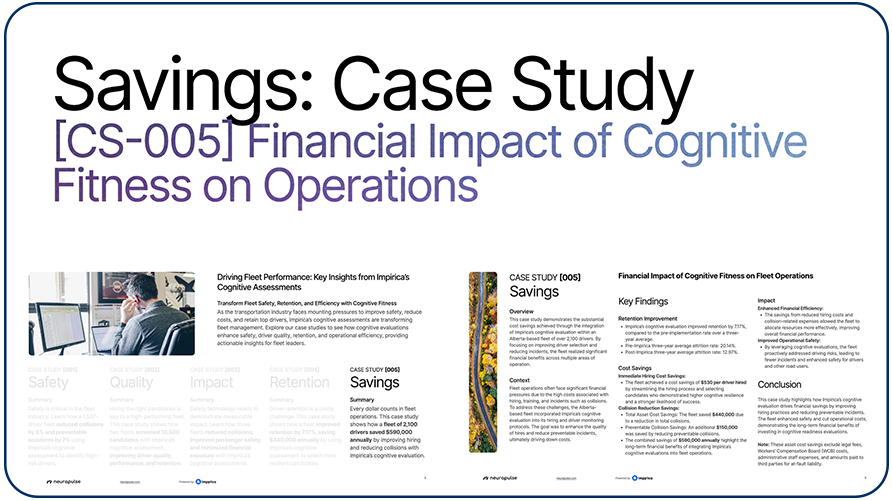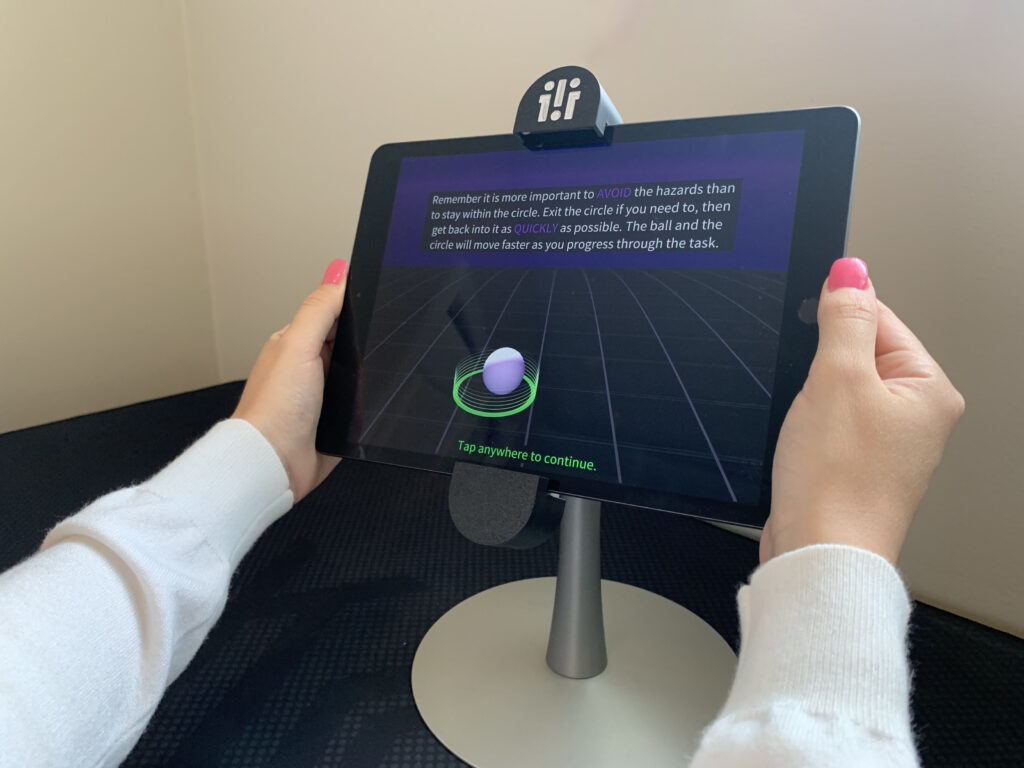Six Compelling Case Studies on the Power of Cognitive Fitness Assessments
In today’s dynamic fleet environment, ensuring driver and public safety demands innovative approaches that go beyond traditional methods. By integrating cognitive fitness assessments into daily operations, fleet managers are now able to identify potential risks early, intervene proactively, and implement targeted improvements. The following six case studies illustrate how Impirica’s cognitive assessments have not only flagged dangerous behaviors but also uncovered underlying issues—from substance abuse and hidden health conditions to distractions and personal stressors—leading to decisive actions that enhance overall safety and operational excellence.
Case 1: Drug-Induced Impairment
Unmasking the Hidden Danger: Early Detection of Drug-Induced Impairment
A routine cognitive assessment flagged a driver for high-risk, prompting further investigation that revealed cocaine use. This early detection empowered the fleet to enforce disciplinary measures and sharpen its impairment monitoring.
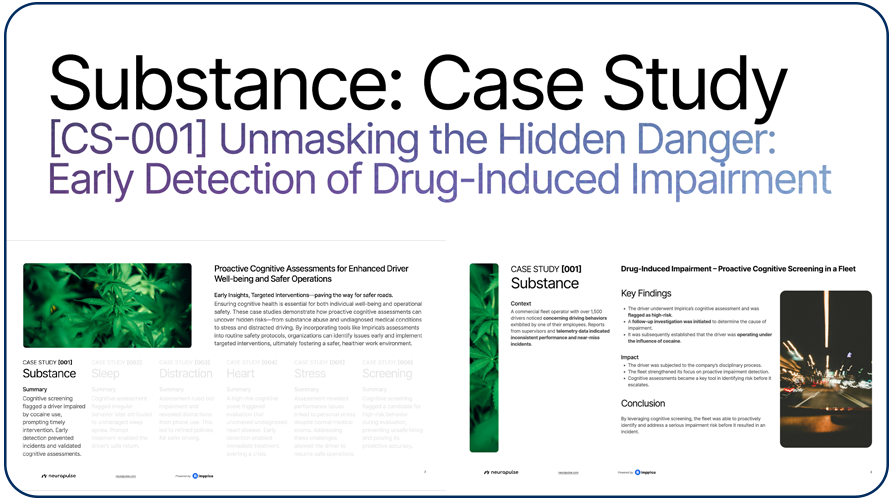
Download the full case study to discover how proactive screening can prevent dangerous incidents.
Case 2: Undiagnosed Health Condition – Sleep Apnea
Beyond the Wheel: Revealing Hidden Health Risks Impacting Driver Performance
Irregular driving patterns led to a high-risk flag on a cognitive assessment, ultimately uncovering unmanaged sleep apnea. With treatment initiated, the driver returned safely, while the fleet expanded its focus on sleep-related risks.

Download the case study now to learn how uncovering hidden health issues can transform driver safety.
Case 3: No Impairment – Distracted Driving
Shifting the Focus: From Cognitive Screening to Tackling Distracted Driving
Despite frequent safety flags, a low-risk cognitive assessment ruled out impairment, shifting the focus to habitual distracted driving. The investigation revealed phone use violations, leading to enhanced monitoring and policy revisions.

Download the full case study to see how ruling out impairment can redirect efforts to tackle real safety challenges.
Case 4: Hidden Medical Condition – Heart Disease
Heartbeat of Safety: Early Intervention in Uncovering Critical Health Risks
When a veteran driver began exhibiting near-miss incidents, a cognitive assessment flagged him as high risk. Subsequent medical evaluations discovered undiagnosed heart disease, prompting life-saving intervention and timely surgery.
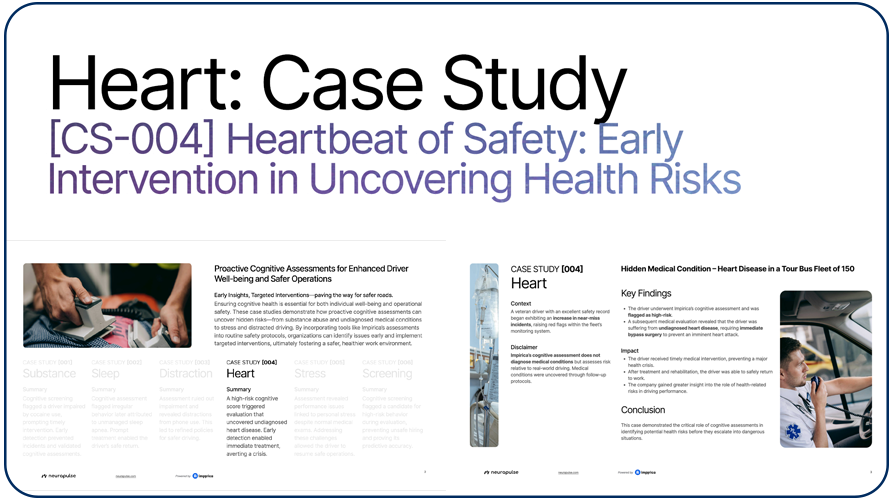
Download the case study to explore how early detection of hidden health conditions can avert crises.
Case 5: Mental Health Challenges
Mind Over Matter: Addressing Emotional Strain to Enhance Road Safety
A high-risk score on a routine assessment revealed underlying emotional distress stemming from a personal crisis. The intervention enabled the driver to access necessary support, highlighting the critical impact of mental wellness on driving performance.
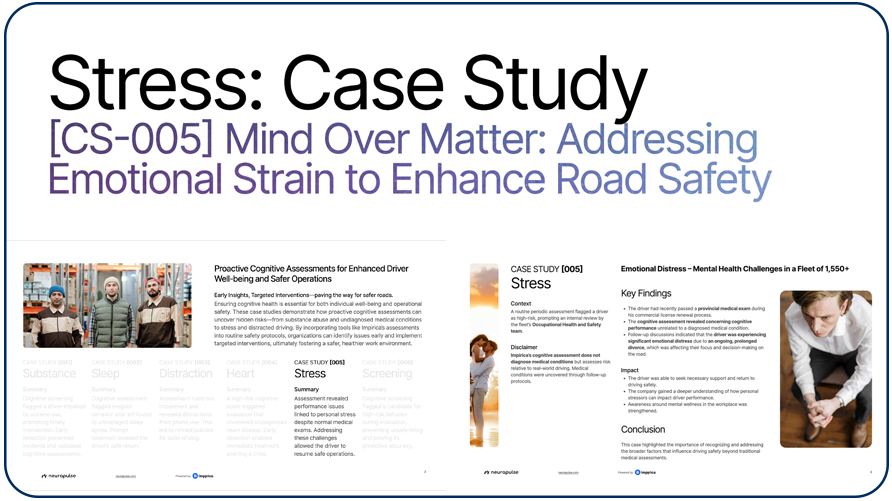
Download the case study to discover the importance of addressing mental health for enhanced fleet safety.
Case 6: Early Risk Identification in Pre-Hire Screening
Precision in Hiring: Proactively Identifying Risk Before They Hit the Road
Integrating cognitive assessments into the hiring process flagged a candidate as high-risk. A subsequent behind-the-wheel evaluation confirmed unsafe behavior, preventing a potentially hazardous hire and reinforcing the value of pre-employment screening.
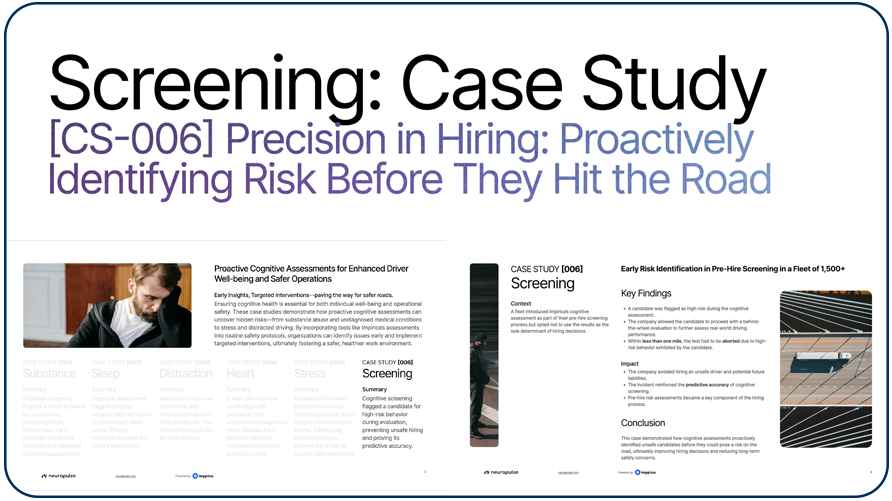
Download the case study to uncover how proactive risk assessment in recruitment safeguards your fleet.
